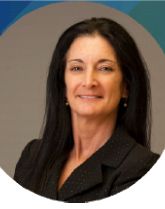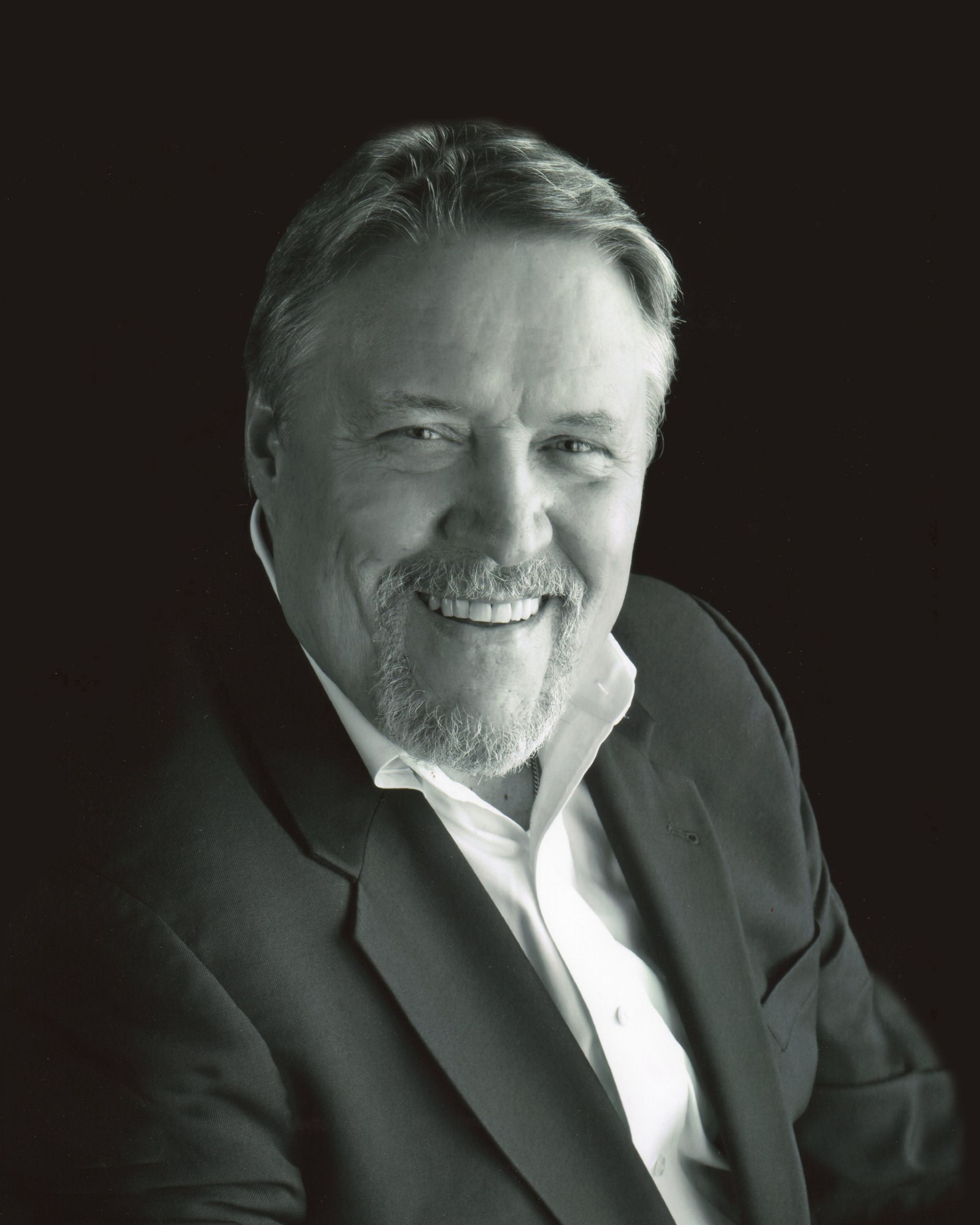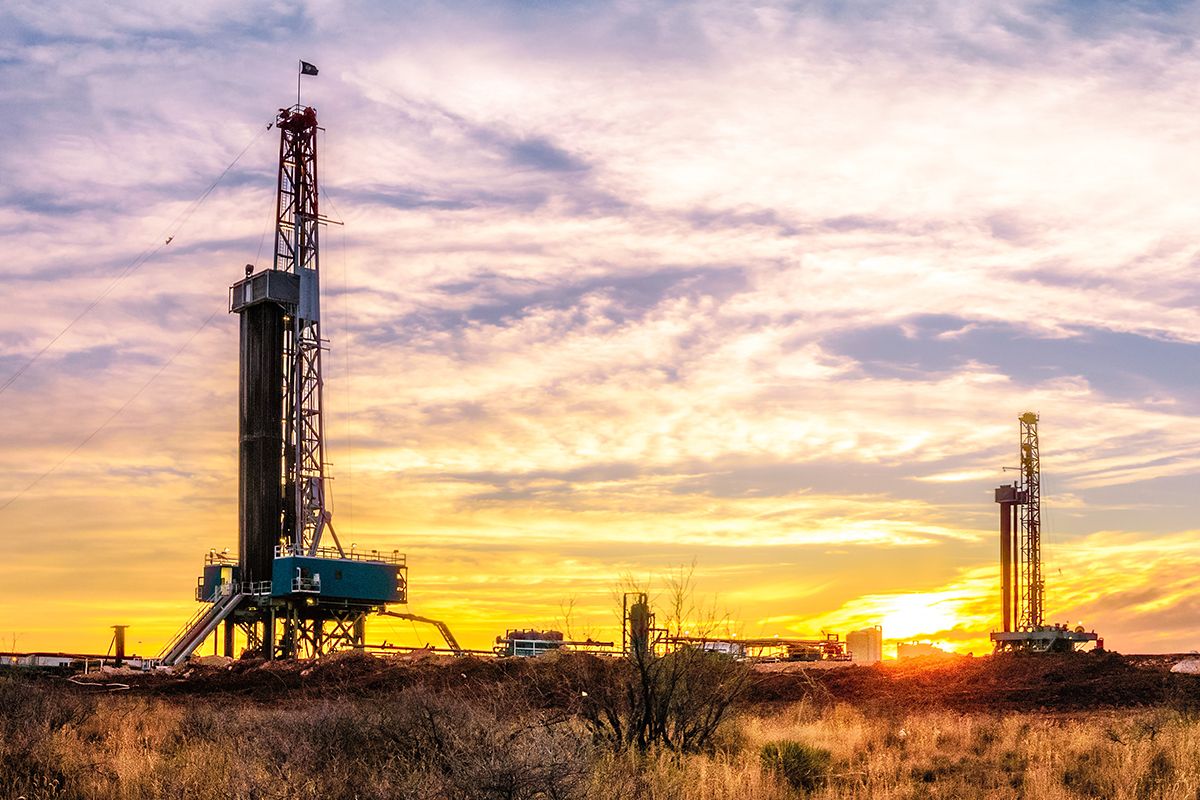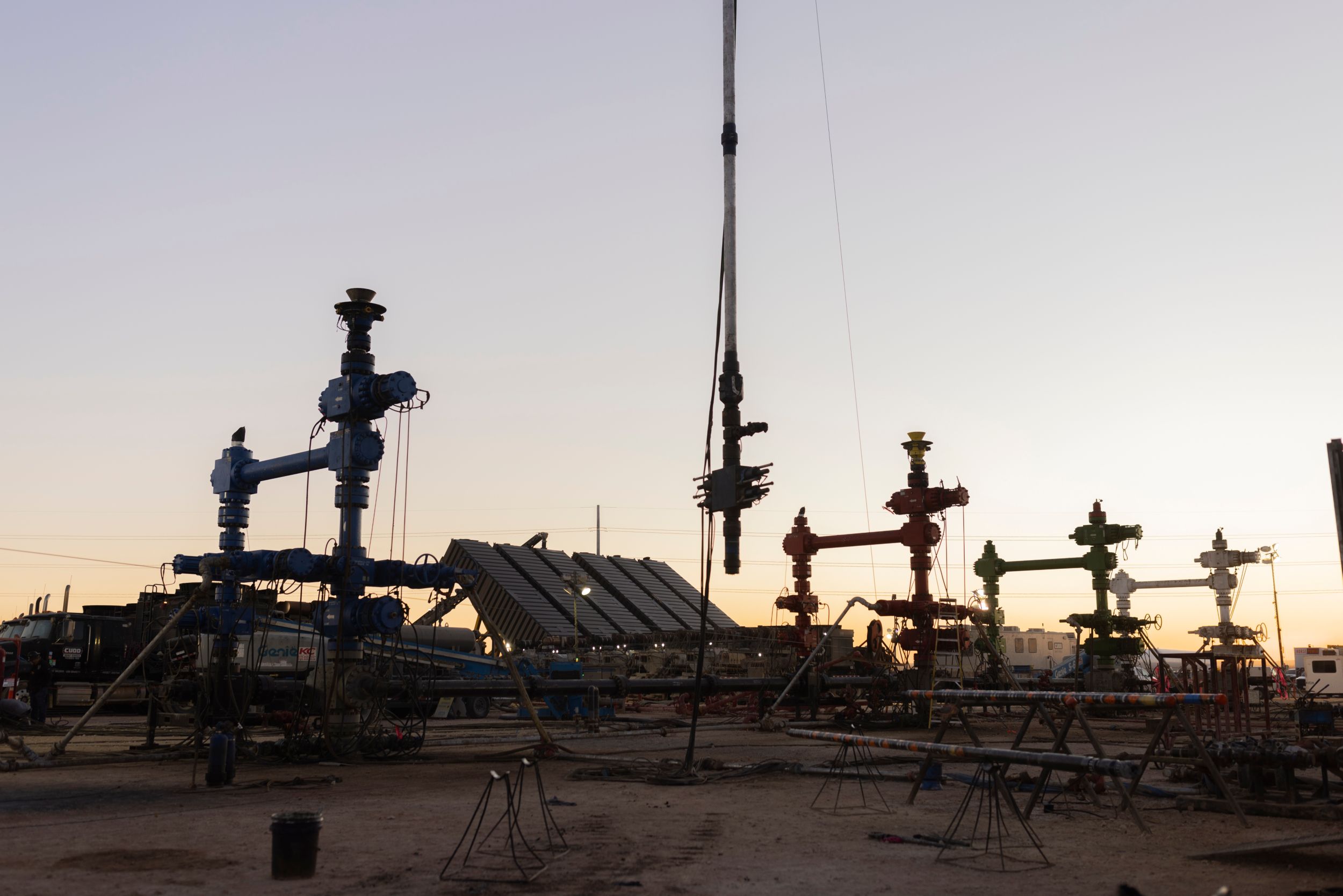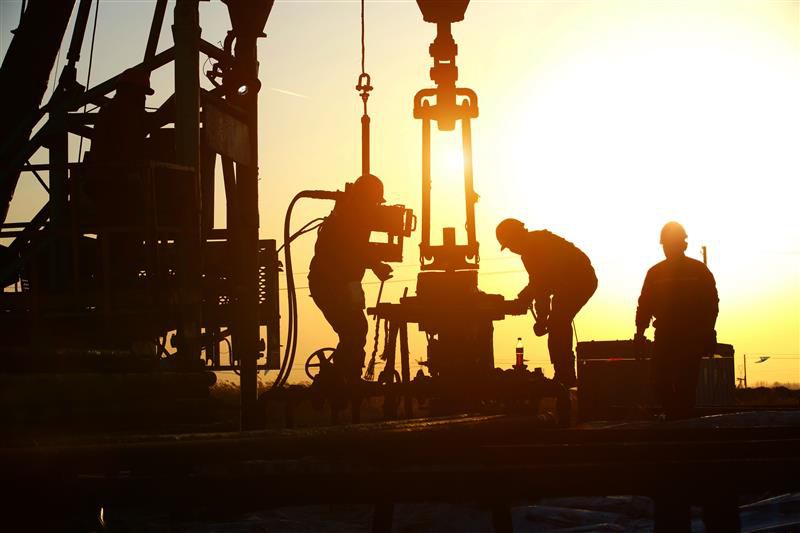Read the full episode transcript
00:00:00 KC Yost
Hello everyone, and welcome to this special episode of the Energy Pipeline Podcast. Today's episode is a rebroadcast of the ESG Energized podcast, hosted by Delfina Govia, with her guest Chris Berrie. Chris is the Drilling and Completions Manager for Cat Oil and Gas. Their topic, "Navigating Hybrid Solutions," discusses how hybrid power selections can make a difference in the field as part of a oil and gas drilling strategy. I hope you find this podcast as interesting as I did.
00:00:33 Speaker 2
The Energy Pipeline is your lifeline to all things oil and gas, to drill down deep into the issues impacting our industry. From the frack site to the future of sustainability, hear more about industry issues, tools, and resources to streamline and modernize the future of oil and gas. Welcome to the Energy Pipeline.
00:00:56 Delfina Govia
Today we are privileged to have Chris Berrie, who is the Drilling and Completions Commercial Manager for Caterpillar. Chris, did I get that right?
00:01:08 Chris Berrie
You got it right. Pleased to be here. Thank you
00:01:11 Delfina Govia
Folks, before we jump into our conversation with Chris, I wanted to just give another shout out to our good friends at Insperity, Insperity's PEO services. We just had a fabulous event with them attending the Purse Bingo in benefit of Be an Angel. It was an absolutely fantastic event, so shout out to them. And now, Chris, without further ado, we're going to jump into this. Chris, the reason why I wanted you on this show is that we continue to make advancements in the area of sustainability directly inside our oil and gas industry. And you being the drilling and completions guy at Caterpillar Oil and Gas, our good friends at Caterpillar, I was hoping that you could come on and tell us what you're seeing inside this space, the advancements that we're seeing, and what's top of mind strategically in the drilling space. Are you good to go with that, Chris?
00:02:08 Chris Berrie
Absolutely. Looking forward to the conversation.
00:02:10 Delfina Govia
All right, you're up to the task. Let's see. Okay. So first of all, Chris, what I like people to do on this show is to get familiar, my audience to get familiar with who it is that we're talking to, Chris. So, how did you get into this? Give us a little bit of your background.
00:02:24 Chris Berrie
Oh, well, yeah, so Chris Berrie here, Caterpillar Oil and Gas. I joined the Caterpillar enterprise around 16 years ago, and at that time was based out of Europe, out of a UK office. And since then have held a couple of different roles, which has had myself on a commercial basis working with oil and gas companies in Europe, Africa, Middle East, and now here in the Americas. So, currently reside in Houston, Texas, at our head office, and work very closely with the drilling and completion segment of our business. And, yeah.
00:03:07 Delfina Govia
And are you also working with product development to be able to support what's going on newly in our industry?
00:03:15 Chris Berrie
I do have the privilege of sharing an office with my colleagues who head up our product development, but we work in lockstep, so the team, both here in Houston and globally, we work with our customer base and part of our role is to understand their strategy going forward, their goals, and to make sure that we have a product strategy in place that supports our customers to be the most efficient at what they do. So we obviously enjoy and engage in those conversations with our customer base and relay that feedback to our product group, which in turn helps us develop a long-term plan for product and solutions and services that then complement the customer strategy.
00:04:06 Delfina Govia
Perfect. Then I knew that you were the right guy to have come on the show, Chris, because what we want to talk about today is we want to find out where are your customers going? What are you seeing is top of mind for them as far as their drilling strategy today? What are you seeing?
00:04:26 Chris Berrie
Well, I think as we look at the evolution of some of our customer base, and I know we're going to talk specifically on drilling today, the transition of years back, going from mechanical drive to electrical driven rigs, and then as the strategies then matured into; okay, as we look at efficiency gains and different fuel and energy sources to tap into, how does that play into our customer's overall strategy? And if we look at the drillers and the operators, both North America and globally, they want to be the most efficient to extract those resources as possible. And two key elements from that come into fuel reduction, and of course the emissions footprint of extracting those hydrocarbons. So if we look at some of their goals, efficiency and lowering emissions being two key elements, and here at Caterpillar, we continue to invest in our products and services offerings to then help our customers reduce both of those asks, reducing emissions and fuel.
00:05:44 Delfina Govia
Okay. So it's basically; nothing's changed in the drilling industry, as far as the operational efficiencies that we have always focused on. And the nuance now is, is that sustainability is a huge component of the discussion and the strategies moving forward.
00:06:03 Chris Berrie
That is correct. Absolutely. Absolutely right. Yeah.
00:06:05 Delfina Govia
Yeah. Are you finding then that as you're having these conversations, that it is a leading topic of discussion when you go into meetings or it is a, "Hey, we're talking about efficiencies. Oh, by the way, what can we do to make it sustainable?" How are you seeing those conversations being approached?
00:06:25 Chris Berrie
Well, I think it's one of the leading discussions, and we always start off with, how can we get more efficient with what we've already got? So, as we look at the asset base out there, can we be utilizing those existing assets more efficiently? Looking at a management system across those assets, how are we managing those assets? How are we loading those assets to be the most efficient at what they could do? And then that also then brings us into the conversation of, well, different drilling programs have maybe some different goals, and depending where you are drilling or operating may even allow you to tap into different energy sources. So, then the conversation goes beyond, "Hey, we can power the program with diesel," to, "Hey, can we tap into field gas?" For example. "Can we blend that field gas with the existing diesel assets?" And then as we look at some of the leading edge technologies, like running 100% natural gas or harnessing excess energy like energy storage, where do those hybrid systems then play a role in our customer's goals of reducing fuel costs, which is a major driver for any drilling program? And then as you reduce your fuel cost, that goes hand in hand with reducing emissions, so it's a win-win in those conversations, of course.
00:07:56 Delfina Govia
Well, that's the exciting part about being in this industry is that no two wells are alike. So the solutions, you have a broad suite of ideas and solutions, and you have to figure out what the right mix is for what your well sites are.
00:08:11 Chris Berrie
Correct. And with that is the flexibility element to which you've just touched on there. You do have to have flexibility, because like you say, no one drilling program is alike and no one basin is alike as well. So again, we want to partner with our customers to provide those flexible solutions and each one tailored to the goals of our customer.
00:08:39 Delfina Govia
So, Chris, let's do this and get it down to some case studies or hard examples of where we're seeing this stuff come to light. So if we're talking about hybrid solutions, we're talking about hybrid technologies and the idea that we have to come up with whatever the right answer is for the wells that we're working with, how are our customers, your customers, and you working together to decide what those answers are? And give us some examples of what you've seen out there and how this is coming together.
00:09:18 Chris Berrie
Sure. We started on the journey of blending natural gas, whether that be field gas or CNG, LNG with diesel well over a decade ago. So that's a well-proven technology. But if we look at more recent developments in the energy mix, our customer base, both operators and drillers alike, picked up the phone and said, "Hey, what we're being asked for is a all-gas natural solution. So reducing diesel on site to nearly 100%. And what does that look like?" So back in 2018, Caterpillar, we leveraged some of our solutions that were already well proven in some of our sister divisions, like mining microgrids alike, and we developed an all-gas natural gas solution and combined those natural gas engines with stored energy with the benefit of the battery storage. So, back in 2018, we look to optimize both energy storage, from the battery technology, with our continual investment in lean-burn, natural gas inaudible technology. So in 2018, we were operating and we first deployed in the Jonah Field. And then since that time in 2018, we've deployed and repowered a number of other rigs both in the U. S. and Canada from the Jonah Field, the DGA, California, Canada, where we've been able to help our customers and operators reduce diesel consumption on site drastically. So with that, we can prove 80 to 85% reduction in fuel costs, so that helps their bottom line. But in doing so, we can also show a huge reduction in emissions as well. So again, speaks to that win-win scenario where we can reduce cost to our customers, as well as the emissions footprint as well.
00:11:29 Delfina Govia
The impact is the key, what kind of impact are you trying to have? To what extent does Caterpillar co-own the data? And I don't mean own in ownership, I mean own like, "It belongs to us, it's our data," but own it in capturing the data and analyzing it and sharing it? Do you guys simply provide the solutions and your customers are capturing the information, or do you guys collaborate with them on that?
00:12:08 Chris Berrie
It's got to be a collaborative effort, and it's got to be a collaborative effort between all parties involved, whether that be the operator, the driller, and the OEM, like Caterpillar. So, with the deployments that we've been rolling out since 2018 now, yes, we've worked with our customers to pull data, but it's got to be the right data and it's got to be meaningful data to drive an action. So what we do is we collect the data as it pertains to how the different assets, whether that be the gensets, energy storage, our operating, and we then have that closed loop feedback with our customers that says, "Okay, versus your baseline of how you're operating before, we're now operating at this level." And we then advise and collaborate with our customers to identify where we're leaving either money, as in fuel cost savings on the table, and that then obviously correlates to emissions. So it's a continual feedback cycle using meaningful data to say, "Okay, where can we collectively get better and keep fine-tuning the system to drive operational costs down?" And why the data is meaningful and the conversation's important is every rig is different, every crew is different, and every drilling plan is different. So it can't be just a one size fits all. We want to collaborate with our customers to make sure the solution is as optimized as it can be, but we don't just set it and walk away. We want to be part of that journey with our customers to continually collaborate to optimize how we're delivering that power to the rig.
00:14:04 Delfina Govia
Chris, you've mentioned earlier that you've worked in other areas, in other regions, rather. I know you've worked in London and Dubai and now you're here in Houston. Question number one is, does your current role go outside of North America, since you mentioned Canada and the U. S.? And if so, are you seeing a difference, a regional difference, in strategies and adoption of hybrid technologies?
00:14:45 Chris Berrie
Well, I am privileged enough to work and collaborate with our global team at Caterpillar, whether that be our office in Singapore, Dubai, China, or London, for example, and to our global dealer network. And as you know, we've got a great global presence with our dealer network, supporting the local customer operations. So I do get involved with the discussions on a global basis, if you will. And I think that we are now starting to see that strategy shift to look at; okay, where can we further optimize the assets we've got running? And then the next step is to look at and identify; what are those other energy sources we can tap into, whether that be natural gas or the adoption of energy storage, as you've mentioned, in terms of that energy mix as part of their operation? So to answer your question, yes, we are seeing that through the Middle East, Africa, for example, in Europe and elsewhere, a more keenly focused effort on the ability to drive down fuel and emissions and utilizing things like the hybrid energy storage solution in a battery technology, in conjunction with either diesel, dual fuel, or all natural gas gensets.
00:16:12 Delfina Govia
I would imagine that having the global footprint, which we all know Caterpillar does, that you have a very broad opportunity to deploy these technologies in various environments, and then it gives you all that more rich of data and content that comes back and learning and understanding that you can build into your products, right?
00:16:39 Chris Berrie
No, well said. And of course, the operating conditions in the Middle East are somewhat different, of course, to operating in Alaska, or-
00:16:51 Delfina Govia
A little bit. Little bit.
00:16:52 Chris Berrie
...so when we look at our product and services development, we do have to make sure, of course, it's fit for purpose where it's operating, and of course the experience of operating in some of the harshest environments in the world allows us to continually develop our product to be fit for purpose and deliver that reliable, optimized power to our customer base.
00:17:21 Delfina Govia
Yeah. We know harsh environments well in this industry, don't we?
00:17:25 Chris Berrie
Yeah, we do indeed.
00:17:27 Delfina Govia
All right. Chris, I'm going to hit you with a question that may not be very fair, but I'm going to see how you react. Let's see how good you are. Do you really think these technologies are moving the needle to lower emissions?
00:17:40 Chris Berrie
I do.
00:17:40 Delfina Govia
Do you really think it's there?
00:17:41 Chris Berrie
I do. I do. And I touched on the all natural gas solution earlier. So if you looked an all diesel powered rig as your baseline of how we've been operating and successfully operating for many, many years, and we look at now the ability to run on field gas, natural gas in basin, and use a hybrid approach of not only running the rig on field gas and then using energy storage and battery technology to dispatch energy or excess energy when needed, we've seen meaningful results. And I say meaningful, because you're looking at over 80% fuel cost reduction. It's not onesie, twosie-
00:18:26 Delfina Govia
Wow. 80%?
00:18:29 Chris Berrie
Yeah. So this is a step change function in terms of fuel cost reduction, going from diesel to an all natural gas hybrid solution, 80% reduction when we consider using field gas. And of course, you then have the additional benefit of reducing NOx in your CO2 e-footprint as well. So, it's a great story.
00:18:53 Delfina Govia
Okay. Okay. Hey, I had to ask, right? People are always-
00:18:57 Chris Berrie
No. I'm pleased you did. I'm pleased you did.
00:19:02 Delfina Govia
Okay. Okay. So, I'm going to switch gears on you just a little bit. I understand that you also serve on the Energy Workforce and Technology Council. Were you not recently the executive committee vice chair or something for that organization?
00:19:22 Chris Berrie
That's correct. So, I've been involved with the Energy Workforce and Technology Council for many years now. It's a tremendous organization.
00:19:31 Delfina Govia
Tell us a little bit about it, because maybe not everybody in our audience knows. Just because I know, doesn't mean everybody in my audience knows. Give us a little bit on that council.
00:19:40 Chris Berrie
Oh, the Energy Workforce and Technology Council is obviously a collection of member companies in the industry, both drilling completions, compression, operators, and they voice advocacy, of course, share best practice, and they're a tremendous organization. I really do employ folks listening to this podcast to look the Energy Workforce and Technology Council up and look to see where you can get involved, because a collective voice is stronger as we carry the message. But yes, after many years, collaborating in the Energy Workforce and Technology Council, I became Chair of the Emerging Executives Committee, but I did have to relinquish that title earlier last year after proudly serving that committee for a couple of years. It was my time to rotate off and give the reins to a good friend and colleague. But no, it's been a tremendous organization and I'm thrilled to be a part of the council.
00:20:55 Delfina Govia
Well, I can see the smile on your face when you talk about that, Chris. Just what do you think is your best memory or greatest accomplishment on working with that group? What are you most proud of?
00:21:09 Chris Berrie
With the Energy Workforce and Technology Council?
00:21:13 Delfina Govia
Yes.
00:21:14 Chris Berrie
I think it's the privilege and honor to network with the best-in-class individuals that they represent through all the member companies. So, they represent such a broad range of companies in the energy sector and the collaborative effort that they drive, it's been very rewarding to me, the networking that comes along with that, the advocacy they do on behalf of the member companies, and they also roll out some tremendous training courses to which of course the member companies contribute into. So, seeing many a graduate, graduate through the multiple training courses both offered here in Houston, in the Permian Basin and other areas, that's very rewarding. And to hear that feedback from folks who have gone through those trainings has been a big deal for me. It's been great to be a part of.
00:22:23 Delfina Govia
Well, why don't we do this? Why don't we include in the show notes a link to the Energy Workforce and Technology Council, so that people can get involved? And we'll also include in the show notes a link to Caterpillar Oil and Gas if they want to take a look at some of the solutions that you have for drilling and completions. I'm sure you guys have-
00:22:49 Chris Berrie
That's a great idea. Yeah, absolutely.
00:22:50 Delfina Govia
Yeah, let's do that.
00:22:51 Chris Berrie
Yeah, any area I can help to share the good word, absolutely.
00:22:57 Delfina Govia
Okay, Chris, so let's do this, we're getting to the end of our time here, but I am going to leave the last minute or two of this show to you. What, if anything, do you want to leave my listeners with? It could be anything that has to do with Energy Workforce, Technology Council. It could be with how these hybrid technology solutions are impacting our industry. It could be a shout-out to young people wanting to get involved in this industry. Anything at all, Chris, what do you want my audience to know?
00:23:38 Chris Berrie
Well, I appreciate you giving me the platform to end with a few remarks here. But number one would be, yes, for the young professionals and young folks starting their journey with the energy industry, it's a tremendous industry. And please reach out to such associations like the Energy Workforce and get involved and bring a friend. So that's number one. And then number two, as we look at how our industry's evolving and it's evolving at such a rapid rate, it's very exciting, it's an exciting time to be part of our industry. And we now have the ability to tap into and power our operations with a variety of energies, energy sources, whether that be, yes, the traditional diesel, blending natural gas with diesel and biofuel, or Caterpillar's DGB solution, or looking at an all gas hybrid solution, running 100% natural gas gensets using field gas, in combination with the energy storage system, as I alluded to. It's really proven a step change function in terms of efficiency to the operation, and when I say step change efficiency, they can be doing more with less and driving down fuel cost and emissions in doing so.
00:25:03 Delfina Govia
So Chris, I'm going to just piggyback on that with something that came across to me, that I hope the rest of my audience is also picking up on. Caterpillar's been serving our industry for decades. I grew up knowing Caterpillar, and we make the mistake, I think, of viewing Caterpillar as an equipment provider. What is really coming across in this discussion with you is that Caterpillar is acting as an innovator and a thought leader beyond just providing equipment, that you guys are putting the time, energy, and effort into advancing and developing solutions, not just in your own vacuum, but in collaboration with our industry, with your customers. And that's what came across for me. So, I really appreciate you joining me, and we are going to put that information in the show notes. Love your comments, Chris, and maybe we'll have you back on in the future.
00:26:13 Chris Berrie
It's been a privilege and an honor. I appreciate the time and looking forward to the next podcast.
00:26:22 Delfina Govia
Fantastic. Thank you, Chris.
00:26:24 KC Yost
Remember, if you'd like to learn more about Cat Hybrid Power generation, you can find it on the web at cat.com/hybridess. That's cat.com/hybridess. Thanks to all of you for tuning into this episode of the Energy Pipeline Podcast, sponsored by Caterpillar Oil and Gas. If you have any questions, comments, or ideas for podcast topics, feel free to email me at kc.yost@oggn.com. I also want to thank my producer, Anastasia Willison Duff, and everyone at the Oil & Gas Global Network for making this podcast possible. Find out more about other OGGN podcasts at oggn.com. This is KC Yost saying goodbye for now. Have a great week and keep that energy flowing through the pipeline.
00:40:51 Speaker 2
Come back next week for another episode of the Energy Pipeline, a production of the Oil and Gas Global Network. To learn more, go to oggn.com.




